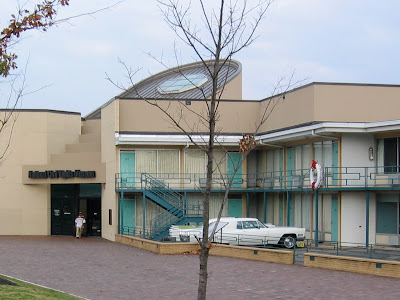
I took I-20 (and a return to the Atlantic time zone for the first time in more than a month) to Atlanta, and I-85 through Greenville and Spartanburg, SC up to Charlotte, not far over the NC border.
The drive was warm and sunny, with the temperature close to 80° throughout, and I arrived in Charlotte around 5:30 p.m. Pics below:

 Birmingham suburbs.
Birmingham suburbs. Downtown Birmingham from the Highway.
Downtown Birmingham from the Highway. Alabama Countryside.
Alabama Countryside. Atlanta in the distance.
Atlanta in the distance. Even though the temperature stayed warm. It started to look like winter just past Atlanta.
Even though the temperature stayed warm. It started to look like winter just past Atlanta. A friend in Georgia.
A friend in Georgia. Atlanta seems to be a vibrant and diverse FM radio market, including a large number of religion-oriented stations. It was curious to hear these radio stations and, at the same time, to see these billboards just north of the city. (I captured 4 of 6, positioned in rapid succession, at the side of the road):
Atlanta seems to be a vibrant and diverse FM radio market, including a large number of religion-oriented stations. It was curious to hear these radio stations and, at the same time, to see these billboards just north of the city. (I captured 4 of 6, positioned in rapid succession, at the side of the road):



 Arrival in Charlotte.
Arrival in Charlotte.






















































